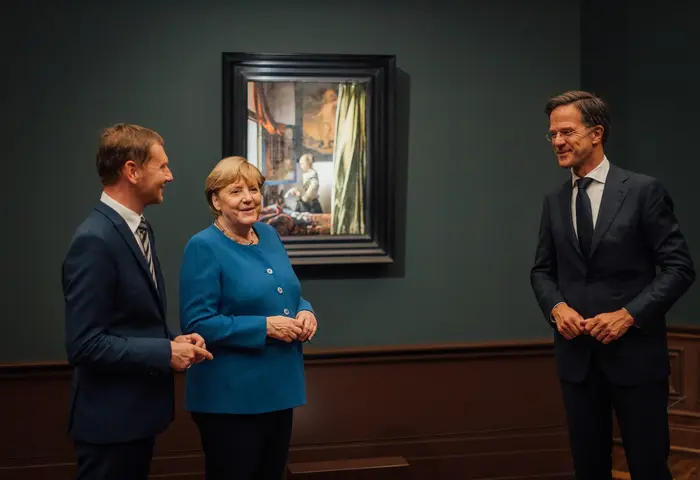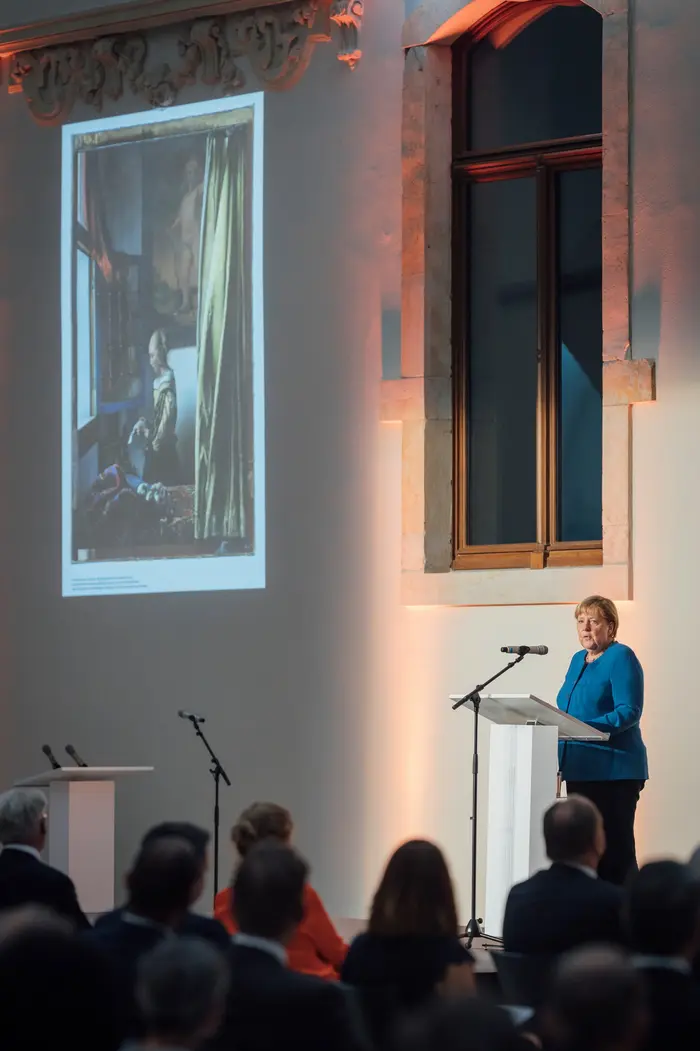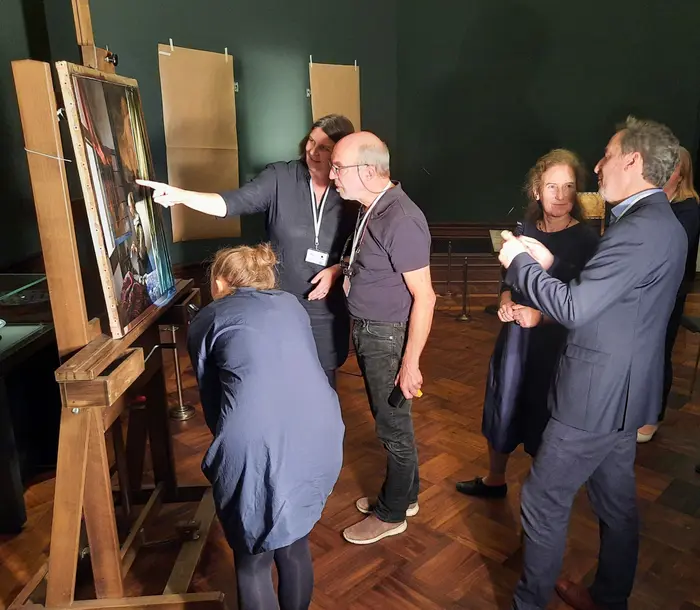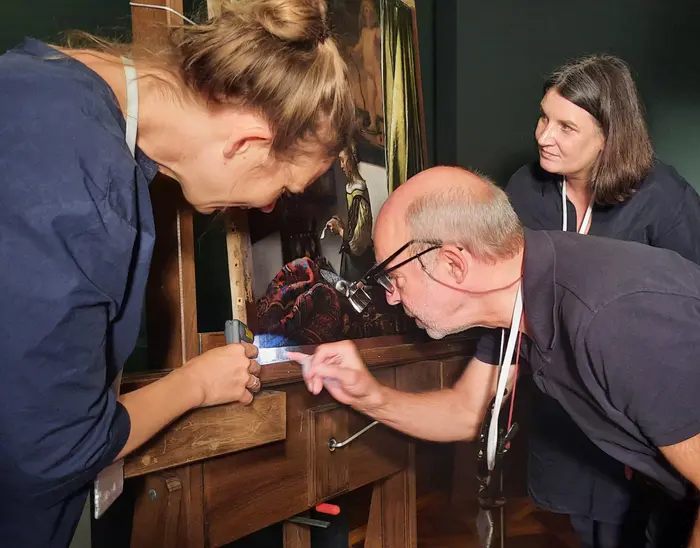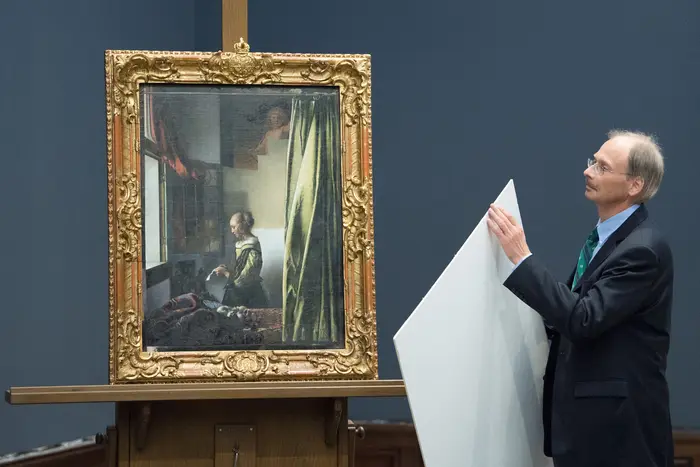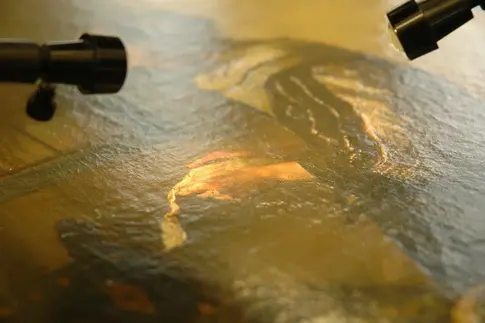[Translate to English:] „Bild im Bild“
A depiction of Cupid originally incorporated on the rear wall as a “painting within the painting” was later painted over again. As a result of the latest investigations and the current restoration of the painting, it has now been proven that this overpainting was not done by Vermeer himself but was executed by a different hand some years after the completion of the Girl Reading a Letter. It has not yet been possible to identify the originator of this overpainting that completely covered the background picture, including its broad black frame, nor to determine at what point in time it was performed.
Although only about half of the Cupid picture on the rear wall of the room has so far been exposed, the fundamental change to the overall impression of the painting is already evident. It is now clear that the Dresden Girl Reading a Letter is another one of the numerous interior scenes by Vermeer in which there is a “painting within the painting” located on the rear wall. In this case, the artist was probably quoting a painting in which a standing Cupid was depicted with an upright bow in his right hand and with his left arm raised. This motif is already known from three other interior paintings by Vermeer.

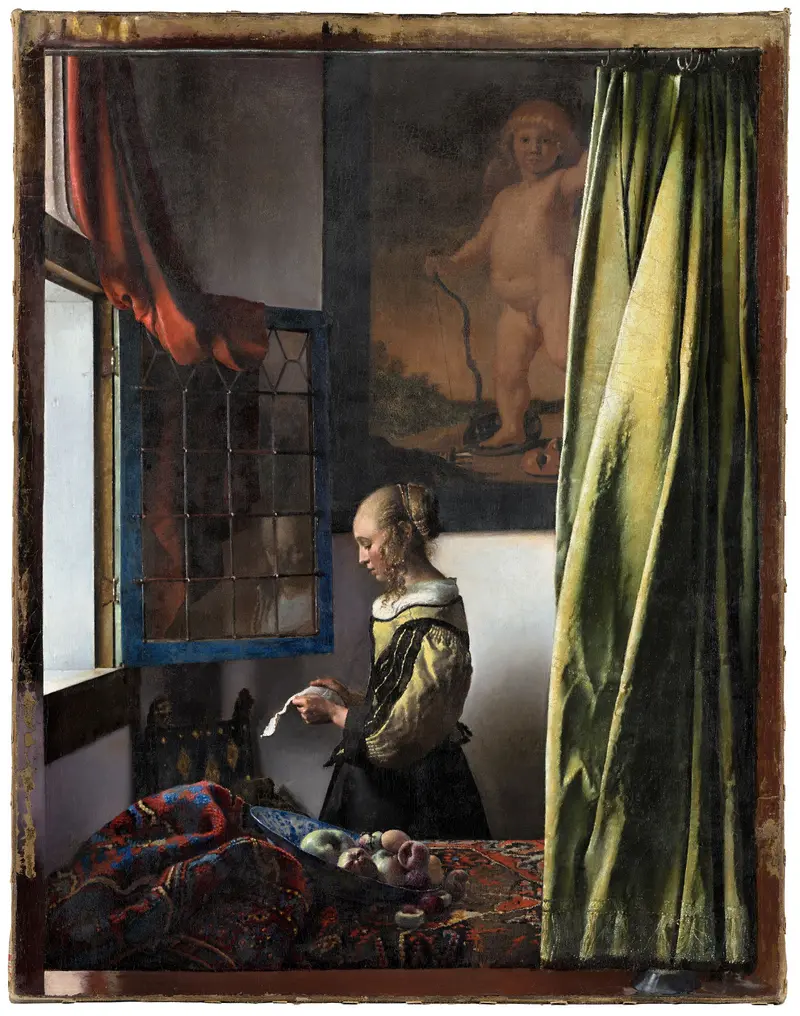

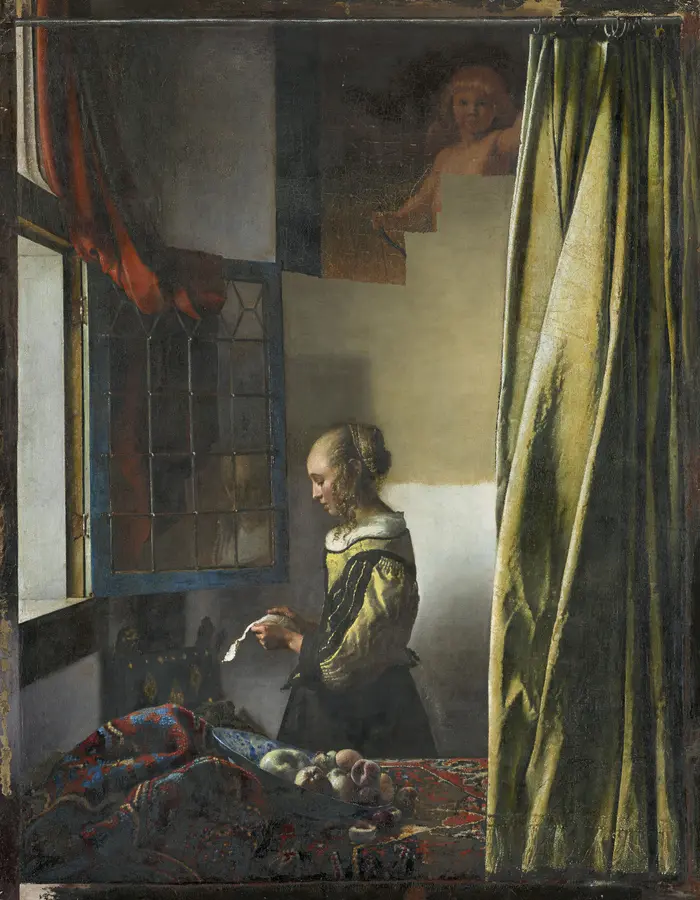
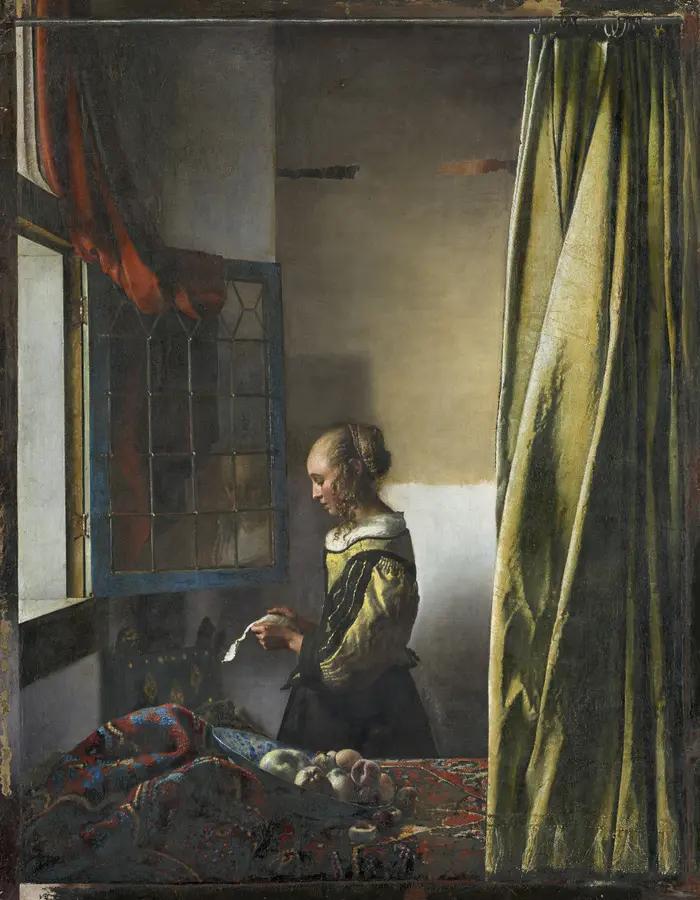
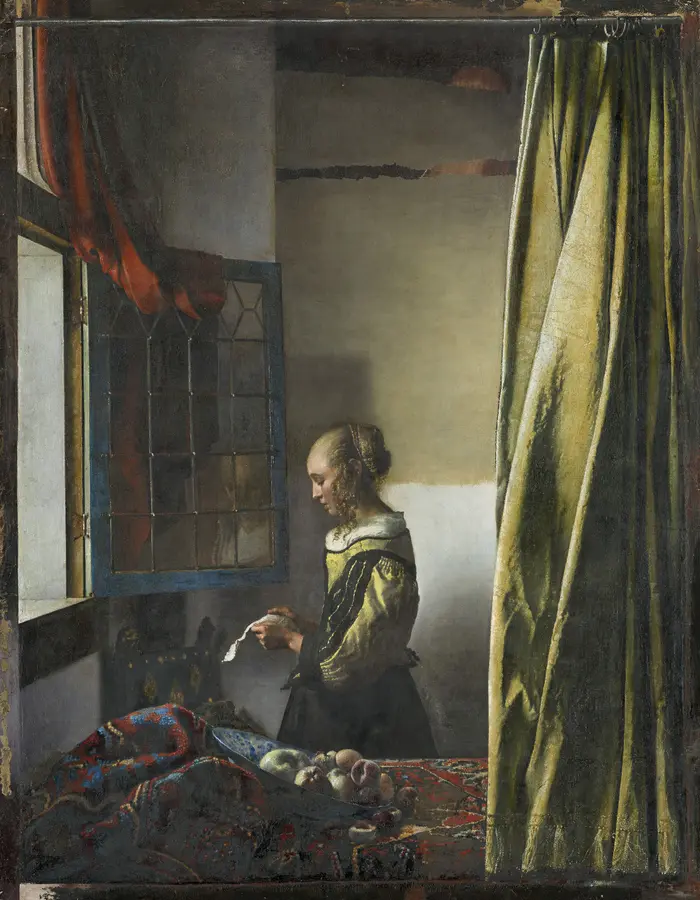
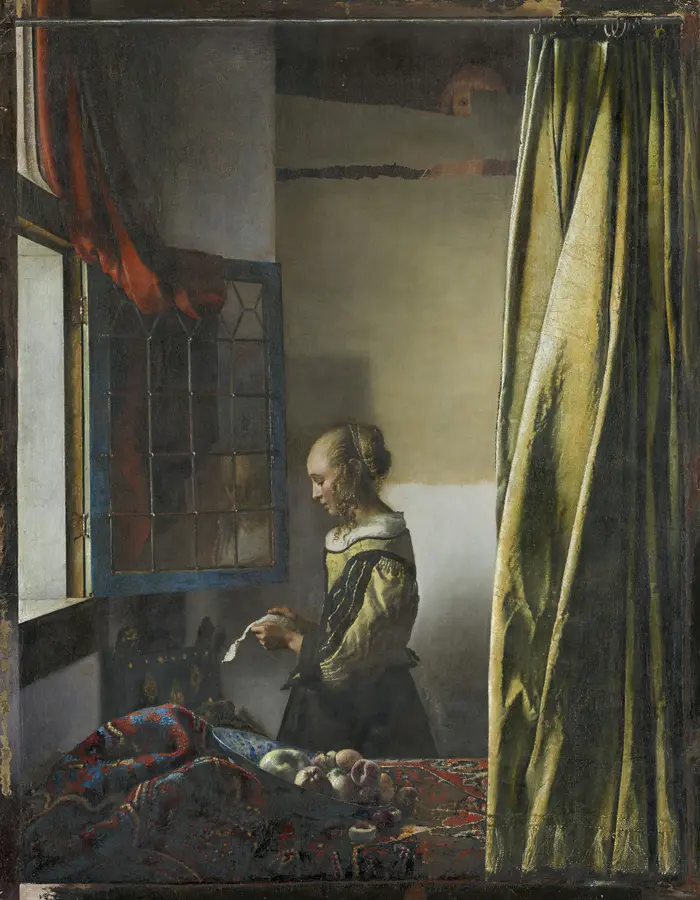
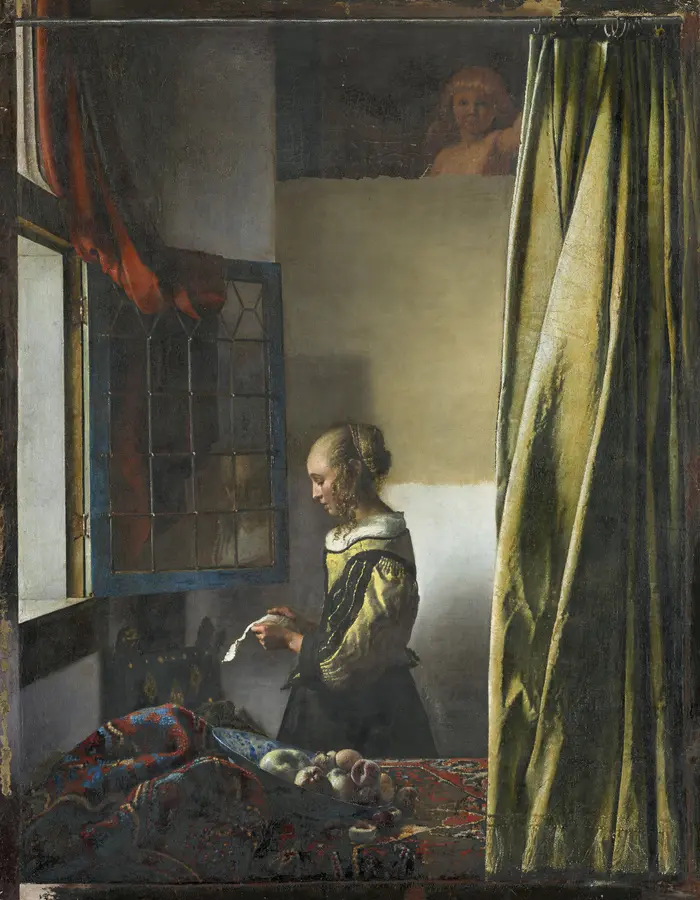
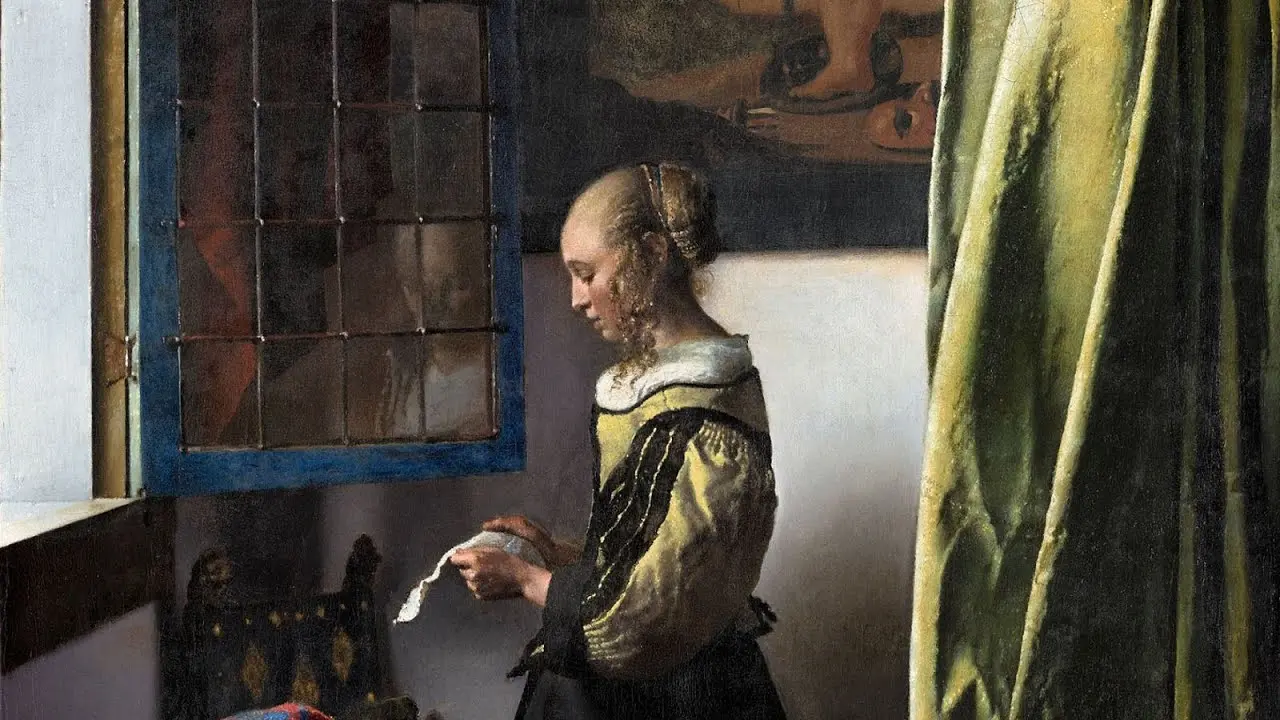
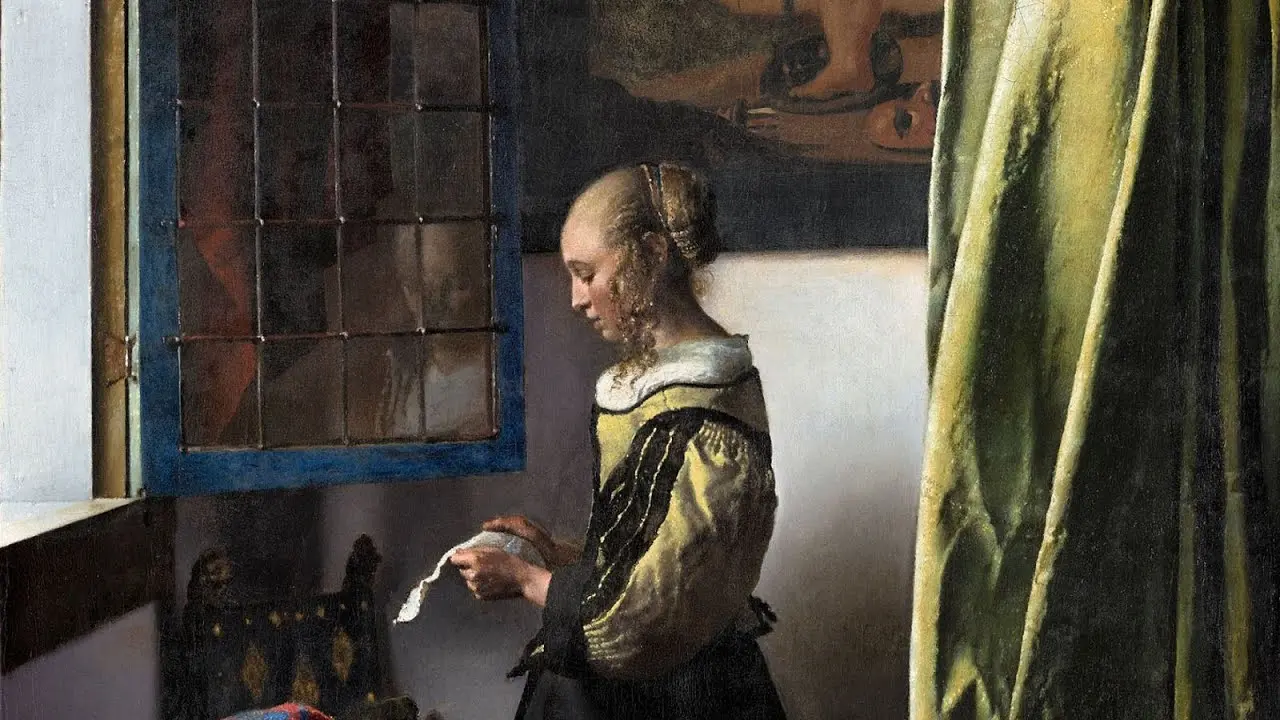
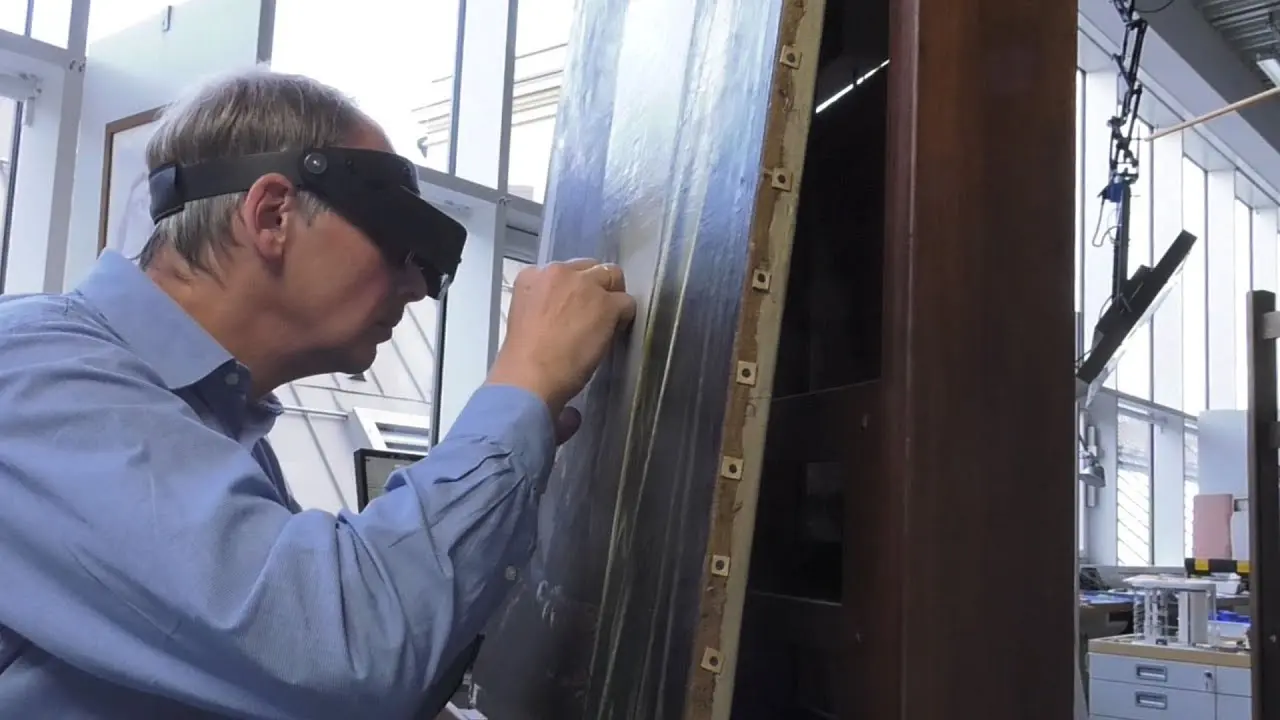

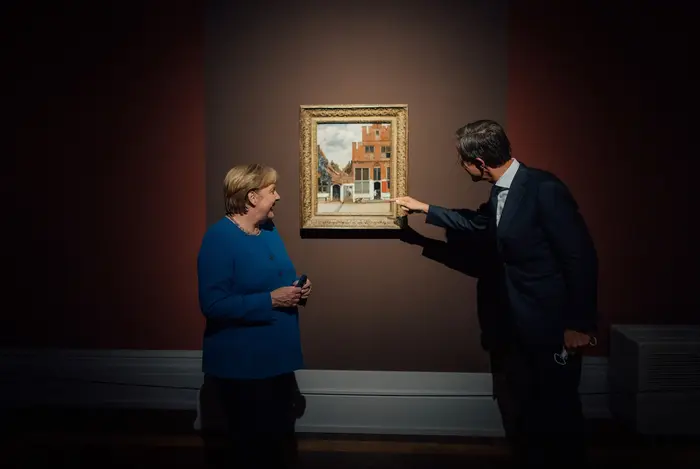
![[Translate to English:] Bundeskanzlerin Angela Merkel beim Besuch der Ausstellung anlässlich der Eröffnung am 9. September 2021 [Translate to English:] Kanzlerin Angela Merkel bei der Betrachtung der "Briefleserin"](/fileadmin/_processed_/d/2/csm_090921killig337_e09c255680.webp)
